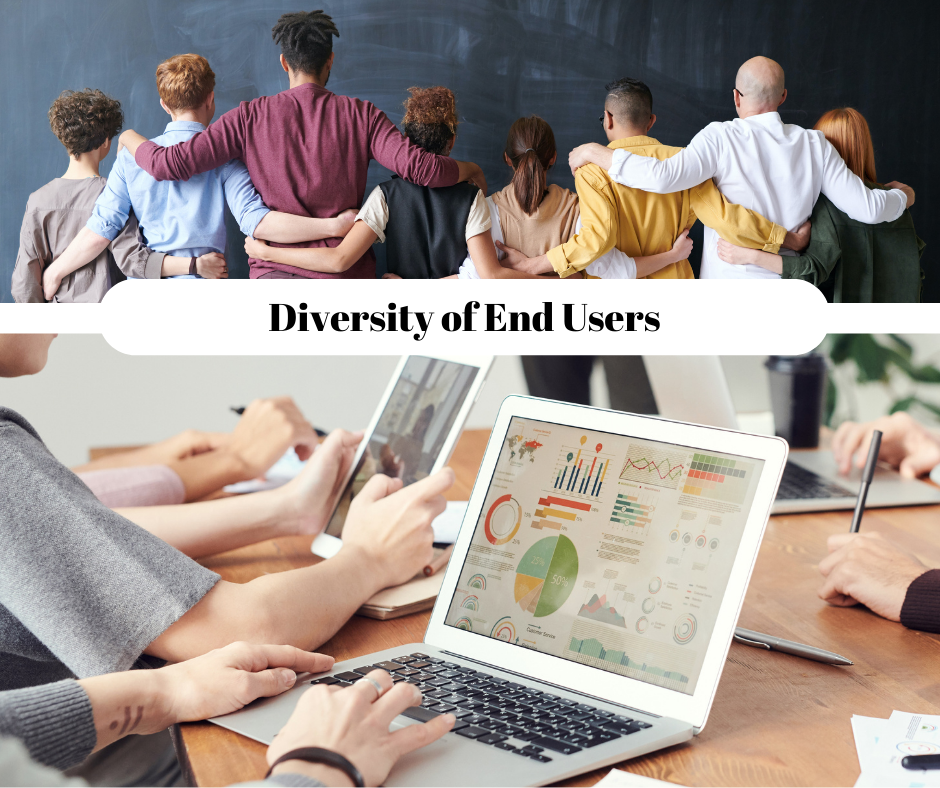Adaptive User Interfaces (AUIs), a well-known research sub-field within Intelligent User Interfaces (IUIs), were defined by Maybury (1999) as “human-computer interfaces that aim to improve the efficiency, effectiveness, and naturalness of interaction by representing, reasoning, and acting on models of the user, domain, task, discourse, and media (e.g., graphics, natural language, gesture)”.
User interface adaptation is the process of changing the interface of a software system to meet the needs, wishes, and preferences of a particular user or group of users (Abrahão et al., 2021). Adaptive systems are based on the principle that the system should be capable of identifying circumstances that require adaptation and, as a result, selecting and carrying out an appropriate course of action (Riascos et al., 2017). But then, why socio-demographic aspects of user behavior are important to consider in such adaptations? Well, understanding the end-users and the context of use is the first step when designing adaptive interfaces. Humans are complex social beings with a wide range of characteristics and identities. Therefore, there is a need to take into account the diversity of people to create a diverse and inclusive end product tailored to the needs, wishes and preferences of the users.

Designing a multi-user adaptive interface is supposed to account for the diversity in the end-users and in the contexts of use, as well as making alternative design decisions at various levels of the interaction project, which inherently leads to diversity in the final design outcomes (Riascos et al., 2017). The following factors are incredibly important in designing adaptive user interfaces and should be always taken into account because it allows to build a fair, diverse and transparent product tailored to the needs of the individuals.
- Socio-demographic information refers to the social and demographic factors that define people in a specific group or population. Socio-demographics include information about individuals such as age, education, religion, employment, marital status, income levels, migration background, race, ethnicity and/or others.
- Individual differences must also be considered because each person is unique in the combination of their personality traits and how they behave in social situations. Individual differences are related to psychological traits, personal characteristics, cognitive or emotional components and can comprise differences such as personality traits, stress, and anxiety levels, working and decision-making styles, and others.
- Cultural differences are equally important because people are shaped by it as they gain knowledge and learn the language, values, norms, customs and/or traditions. Therefore, cultural differences will influence the way an individual’s personality, working styles, decision-making, perception and many others.
As mentioned by Riascos et al. (2017), the goal of adaptive systems is to develop smart objects and consumer goods that can automatically satisfy a wide range of skills, abilities, needs, and human preferences in an environment where each solution is tailored to a specific individual. And this realization is possible by using AUIs, as they can employ artificial intelligence techniques to improve interaction by adapting the display based on the user’s abilities, limitations, personalization, and context.
References
- Abrahão, S., Insfran, E., Sluÿters, A., & Vanderdonckt, J. (2021). Model-based intelligent user interface adaptation: challenges and future directions. Software and Systems Modeling, 20(5), 1335-1349. Springer.
- Maybury, M. (1998). Intelligent user interfaces: an introduction. In Proceedings of the 4th international conference on Intelligent user interfaces (IUI’98), pp. 3-4. ACM Press.
- Riascos, J. A., Nedel, L. P., & Barone, D. C. (2017). An adaptive user interface based on psychological test and task-relevance. In Computational Neuroscience: First Latin American Workshop, LAWCN’17, pp. 143-155. Springer International Publishing.
